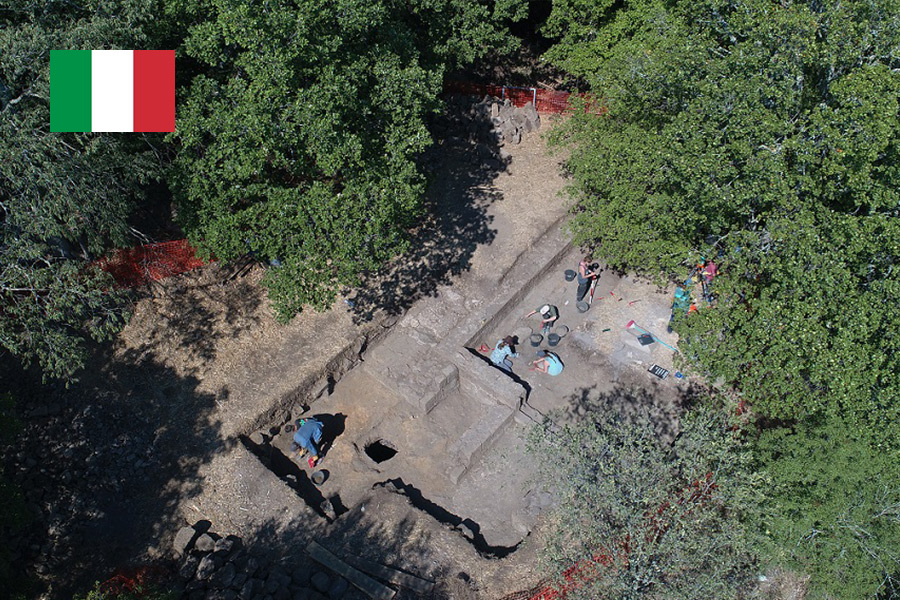Baylor in Italy
San Giuliano Archaeological Research Project
The SGARP is a multidisciplinary research project targeting the rich and virtually unexplored archaeological past of San Giuliano, a site located approximately 70 km northwest of Rome in the Lazio province of Italy. SGARP’s goal is to reconstruct the long-term changes in human occupation on the San Giuliano plateau and the surrounding area.
San Giuliano was occupied from as early as 1300 BC up until it was abandoned sometime in the 13th century. We have focused our attention on the Etruscan (900 - 300 BC) and medieval (AD 500 - 1300) periods as eras of particularly significant societal change. These two periods saw the most intensive use of the San Giuliano plateau. Our investigation of the Etruscan period is three pronged: 1) systematic survey and documentation of the many hundreds of Etruscan tombs cut into the volcanic escarpments surrounding the San Giuliano plateau; 2) salvage excavation of looted tombs to recover human remains and grave offerings; and 3) the discovery and excavation of the Etruscan settlement atop the plateau associated with the surrounding tombs. These investigations will provide an unparalleled glimpse into the social organization and lifestyles of the Etruscan people inhabiting inland Lazio.
The medieval period saw people again inhabiting the top of the San Giuliano plateau. Our efforts have focused on the defensible eastern end of the plateau, an area known as La Rocca, and the complex of fortifications protecting what appears to be an associated village. The first two seasons of work have comprised 1) surface artifact survey and mapping of standing architecture, including a collapsed tower, possible chapel and associated buildings; and 2) the excavation of a large hall, associated buildings, and the open space outside. This work will provide new insights into the economic activities and trade relationships undertaken by San Giuliano’s inhabitants in the Middle Ages, as well as the medieval incastellamento (castle-building) process that reshaped the Italian landscape in the 10th and 11th centuries.
This fieldschool provides Baylor students with the opportunity for hands-on engagement in interdisciplinary scientific research, while simultaneously learning about and enjoying Italy. Students will gain experience in archaeological approaches and techniques, including research design, survey, excavation, and mapping. They will be trained in technical artifact drawing and other forms of recording, investigating, documenting and conserving objects from the past. Participants in the field school will work closely with experts in analyzing human and animal bones. The students will also have the opportunity to join specialists in geophysics as they use techniques of ground penetrating radar and magnetometry to detect subsurface remains.
The San Giuliano Archaeological Project is led by Baylor University in collaboration with Anderson University, Virgil Academy, the Province of Viterbo, the town of Barbarano Romano, Civic Museum of Archaeology, Barbarano Romano, Museo della Tuscia Rupestre, Marturanum Regional Park, and the Italian Soprintendenza Archeologia, Belle Arti e Paesaggio per l’Area Metropolitana di Roma, la Provincia di Viterbo e l’Etruria Meridionale. SGARP is supported by the Baylor’s Anthropology Department, Classics Department, Honors College, and Center for Global Engagement. We are fortunate to have Virgil Academy as our partners in Italy. Virgil Academy facilitated the launch and local organization of our project. The group continues providing logistical support for our research and teaching. In full collaboration with Virgil Academy, we are committed to protecting and enriching the cultural heritage of central Italy.


